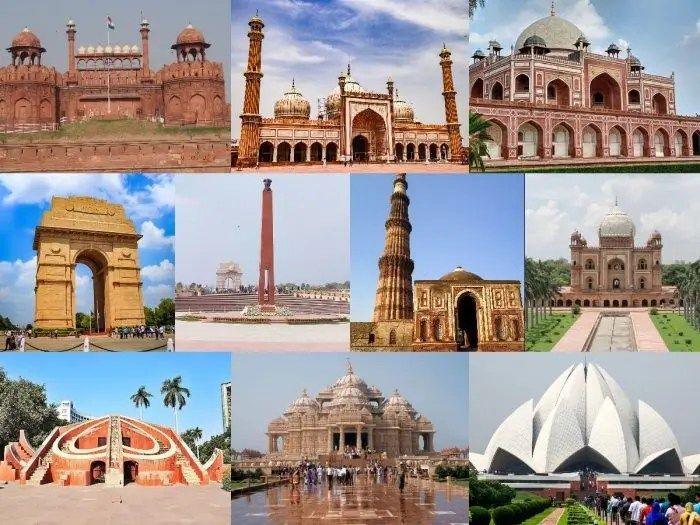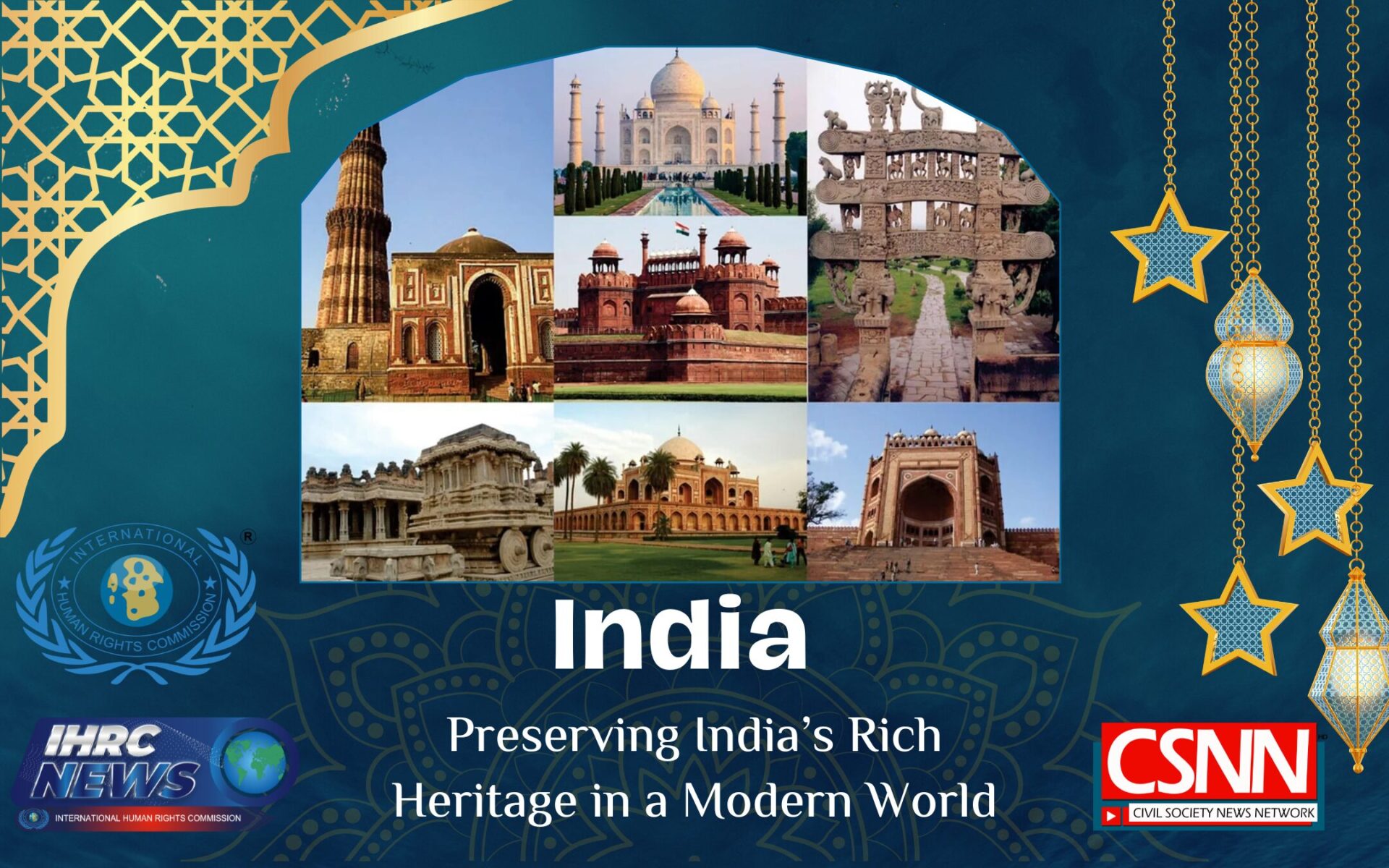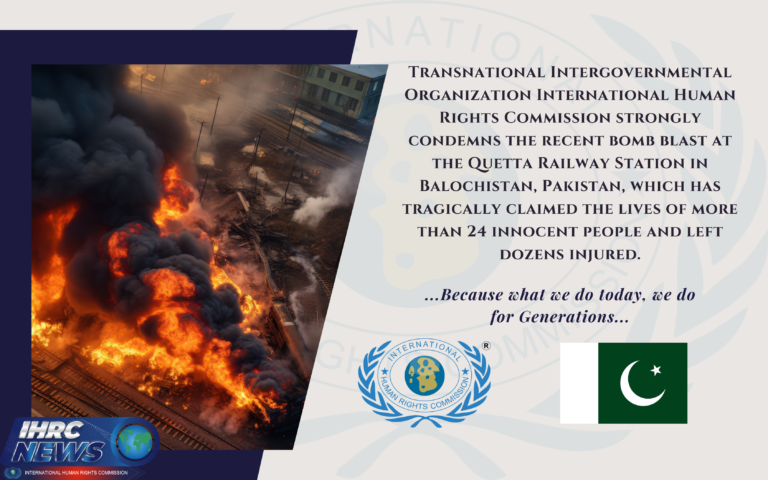India, a land of extraordinary diversity, holds a cultural legacy that has flourished for thousands of years. Its vibrant heritage, encompassing ancient scriptures, majestic monuments, traditional arts, and festivals, is a testament to its rich history. This heritage is a mosaic of influences, including Hindu, Muslim, Buddhist, Christian, Sikh, and other cultural traditions, which together define the nation’s unique identity. However, as India embraces modernity, preserving this treasure trove of history and culture amid rapid progress poses a significant challenge.
India’s Multicultural Essence:
India’s heritage is not monolithic; it is a harmonious blend of various traditions. From the serene Buddhist stupas of Sanchi to the grandeur of Mughal architecture, and from the Vedic scriptures to the calligraphy of Islamic manuscripts, every aspect reflects the country’s multifaceted identity. Muslim heritage, in particular, holds a distinguished place in shaping India’s cultural and artistic fabric. Iconic structures like the Taj Mahal, Qutub Minar, Charminar, and the intricately designed Jama Masjid stand as eternal symbols of India’s architectural brilliance and cultural inclusivity.
The contributions of Muslim rulers and scholars extend beyond architecture to include advancements in art, science, literature, and governance. Urdu poetry, Mughal miniature paintings, and the rich traditions of Sufism and Qawwali continue to inspire generations. These elements not only connect us to our past but also form an integral part of India’s cultural identity in the global arena.
Challenges to Heritage Preservation:
Despite its grandeur, India’s heritage faces significant threats:
- Urbanisation: Rapid growth in cities has encroached upon historical sites, including the loss of many ancient mosques, tombs, and heritage markets.
- Neglect: Many significant structures, such as the Tughlaqabad Fort, are in a state of disrepair due to lack of maintenance.
- Environmental Damage: Pollution and climate change have severely affected monuments like the Taj Mahal, causing discolouration and structural weakening.
- Cultural Erosion: The homogenisation of cultures and the allure of modern lifestyles threaten to overshadow traditional practices, including Islamic art forms and literature.
Preservation in the Modern Age:
Modern technology and community-driven initiatives can play a transformative role in preserving India’s heritage:
- Digital Archiving: Efforts like the digitisation of ancient manuscripts in Persian and Arabic ensure that literary treasures are preserved for future generations.
- Restoration Projects: Collaborations between the government and organisations like the Aga Khan Trust for Culture have successfully restored monuments such as Humayun’s Tomb in Delhi.
- Sustainable Tourism: Promoting responsible tourism to places like Ajmer Sharif or Hazratbal Shrine can ensure economic support for local communities while protecting the sanctity of these sites.
- Community Engagement: Involving local communities, including custodians of Islamic heritage, in preservation projects fosters a sense of pride and ownership.
- Educational Initiatives: Teaching the younger generation about the contributions of various communities, including Muslims, to India’s heritage will instill a deeper appreciation for cultural diversity.
The Role of Citizens:
Preserving India’s heritage is a shared responsibility. Citizens can contribute by respecting heritage sites, promoting traditional crafts like Zardozi embroidery or Kashmiri carpet weaving, and participating in awareness campaigns. Simple acts such as keeping monuments clean, supporting artisans, and learning about the history of one’s locality can have a far-reaching impact.
Heritage in Harmony with Modernity:
India’s journey into the modern era need not come at the cost of its heritage. Instead, heritage and modernity can coexist, enriching each other. The geometric patterns of Mughal architecture can inspire contemporary design, while modern technology can ensure the survival of ancient art forms. Heritage sites can serve as hubs for cultural exchange, bridging the past and present.
A Call to Action
In a rapidly globalising world, where cultural identities are often diluted, preserving India’s rich heritage is more important than ever. This is not just about saving monuments or reviving traditions; it is about safeguarding the essence of a nation that thrives on diversity. By cherishing our shared history—whether Hindu, Muslim, or otherwise—we can build a future where India’s cultural legacy continues to inspire and unite.
As stewards of this extraordinary heritage, let us pledge to honour and protect it, ensuring that its magnificence remains timeless for generations to come. By doing so, we celebrate not only the past but also the spirit of unity that defines modern India.

Author:
Mohmad Husain Lone
SMM IHRC India Regional Volunteer Coordinator (RVC)









good